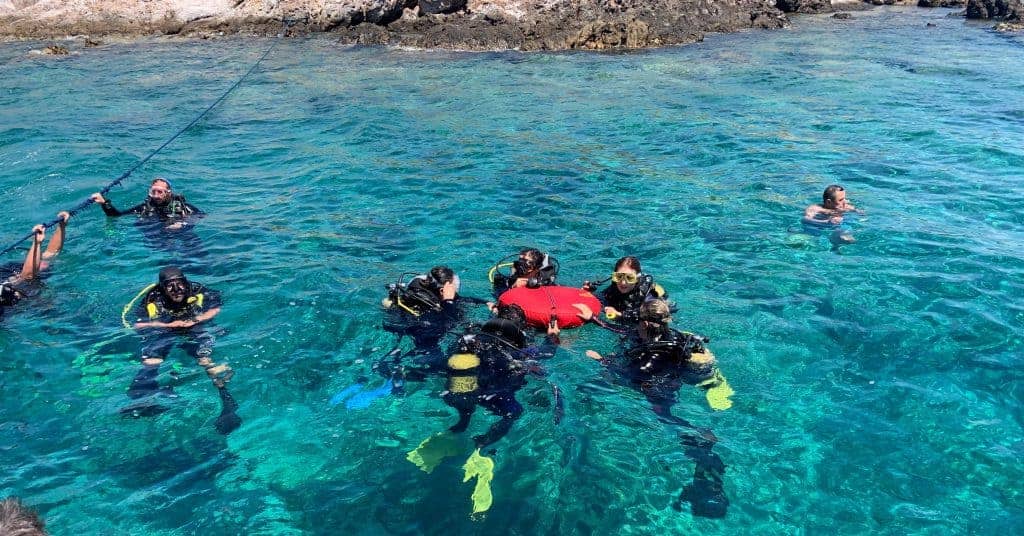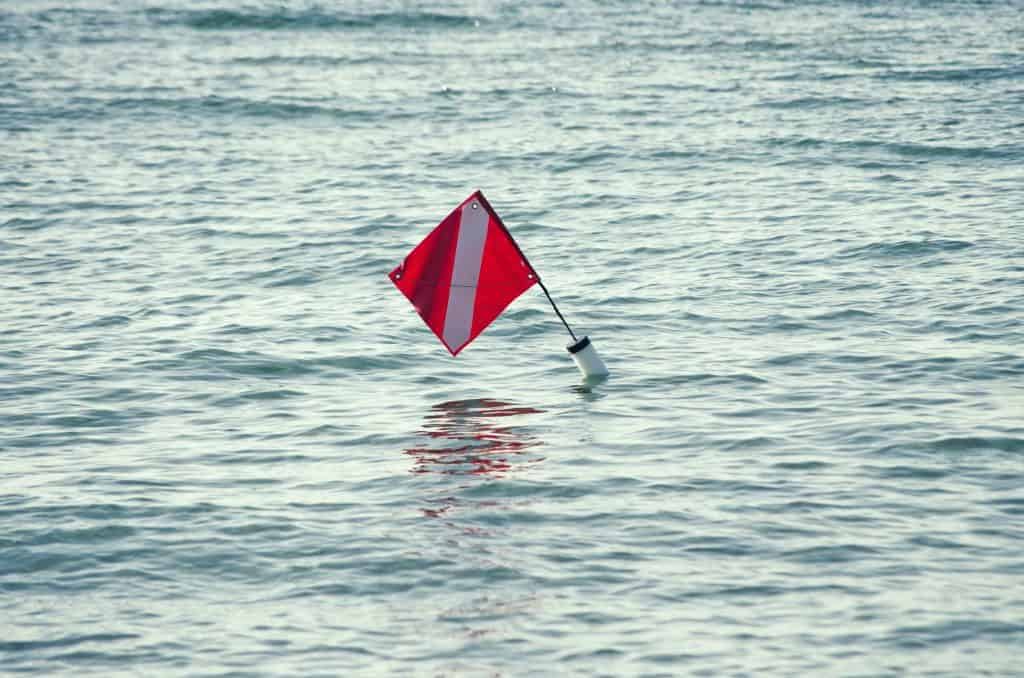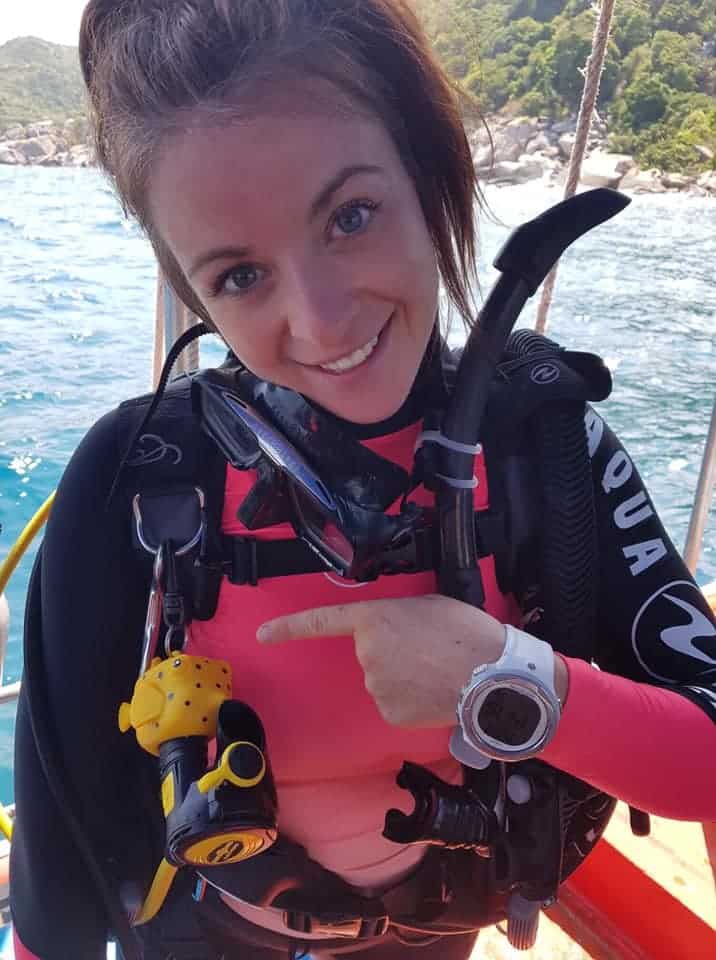A surface marker buoy (SMB) is a floating device that is there to mark exactly where you are in the water for the people on the surface. They are essential, especially in areas where there is a lot of traffic, be it on boats, surfboards, or even people. They are bright, plastic tubes and often have writing on them and allow surrounding people to know how close they can get to you and where to get to you as surface support if need be.
If you are planning on learning to scuba dive, then you may have heard divers talk about both SMBs and DSMB’s. Surface Marker Buoys (SMB’s), and Delayed Surface Marker Buoy (DSMB’s), are essential for any scuba dive as they are a part of the necessary safety equipment that you should carry with you. You may also hear these useful bits of gear referred to as a safety sausage!
It is also a marking point for you as a diver, you should always be within five metres of your SMB, and no boat should be within fifteen metres of your and your SMB. Although, do make sure you check on local regulations, as these can vary depending on what part of the world you are diving in.
However, even amongst scuba divers, there can be some confusion regarding what an surface marker buoy is and how to use it properly. Keep reading, and I will show you how!
Table of Contents
What is the Difference Between DSMB & SMB?
Basically, the only difference between SMBs and DSMBs is the word ‘delayed’. Where surface marker buoys need to be installed before your dive has begun, a delayed surface marker buoy can be installed mid-dive. However, they should be put up before you have completed your safety stop!
Regardless of type, this dive float is crucial in ensuring that approaching dive boat traffic knows when there are people below the water . Therefore, regardless of whether you are midway through a drift dive or are just about to embark on your safety stop, it’s always worth deploying that surface marker buoy.
Do I Have to Use an SMB?

The answer simply is yes! Surface marker buoys should be a general part of your safety equipment. Whether it be for recreational divers, professional divers or technical divers, surface accidents involving boats are regrettably common problems.
Moreover, should a fellow diver need help, by being able to locate their “safety sausage” or dive foot, they will be far easier to find. Furthermore, they provide spots for you and your dive buddy to reconvene and a perfect place to have your safety stop before regaining the surface.
Really, there is no downside to using a surface marker buoy, whether you are in a dive group of inexperienced divers or are a dive professional yourself. SMBs may not seem to be particularly sophisticated, but you will have a poorly controlled environment during your entire dive if you do not have one in place ready for deployment.
A lot of our coastal shore dives here in the UK require the use of a SMB as they are often shallow dives and we can encounter a lot of boat traffic.
Lost divers are often only found so easily when they have a surface marker buoy up above the surface. They can be deployed underwater, too, meaning there’s little to no excuse to deploy dive floats once you reach your safety stop. Think of it as one of your vital scuba safety skills.
How To Use an SMB
Want to know how to use your dive float effectively? Here’s a quick step by step guide. But don’t forget that PADI do a DSMB Speciality Course, which I thoroughly recommend enrolling on!
Step One: Inflate the SMB before you surface
Yes, a surface marker buoy can technically be inflated at the surface – however, it is wiser to inflate it before you reach it. Serious surface accidents happen when boat users don’t know that divers are about to surface. It will also help your own dive boat to find you and get into place. This is especially important in case there is an emergency, and you need to be picked up as soon as possible. Generally speaking, divers set up their safety sausages at their safety stop depth.
Step Two: Check that you are neutrally buoyant
All throughout the deployment steps, keep a close watch on your depth. Ensuring that you are neutrally buoyant is crucial so that other divers are clear around you. It can sometimes be a bit distracting using your alternate air source or orally inflating. Divers being too close is an entanglement hazard. Moreover, if there are any boats, surfers, divers, or others out above you, then they could block the plastic tube!
Step Three: Signal your diving buddies and take out your SMB
It is important to signal to your diving buddies what you are about to do and ensure that you do not begin before they communicate the ‘OK’ signal.
Take the SMB out from storage and ensure that there are no tangled reels or excess SMB material in the way as you prepare to deploy. Hold the SMB and the reel in your left hand, then inflate.
Some SMBs have an inflation valve at the bottom through which you can put air via your alternate air source. Other SMBs orally inflate, so do remember to take enough breath, but don’t rush it!
Step Four: Release the SMB and rise up
Keep hold of your reel without holding onto the line or the SMB as you let go. When the SMB reaches the surface, remember to keep the line taut.
As you rise towards the surface, remember to reel in the line as you go to make the SMB stand straight. Ensure that you have taken your time to do your safety stop before rising to the surface in order to avoid the risk of having decompression sickness when you surface.
Do not stop pulling just a little line on the SMB once you have surfaced to ensure that the boat can easily find you.
Using an SMB Safely

Without knowing how to deploy the SMB and DSMB safely, you run the risk of getting tangled around it, not providing enough gas to inflate or closed tubes to ensure that it is well adjusted, etc. Therefore, to avoid entanglement and other issues, do ask about how to use your SMB safely and look into booking onto the PADI DSMB Speciality Course. They don’t teach you this important skill in your Open Water Diver Course.
It is especially important to know how to use an SMB if you are going to go diving in a large group. It can be easy to get separated from the group, at which point you will need to ensure that you can hang around for two minutes, keeping your eyes peeled for your group. If you don’t spot the group, then it’s time to launch your DSMB and safely rise to the surface to rejoin your buddies.
Now you know what a safety sausage or SMB is, make it a part of your core dive gear!

